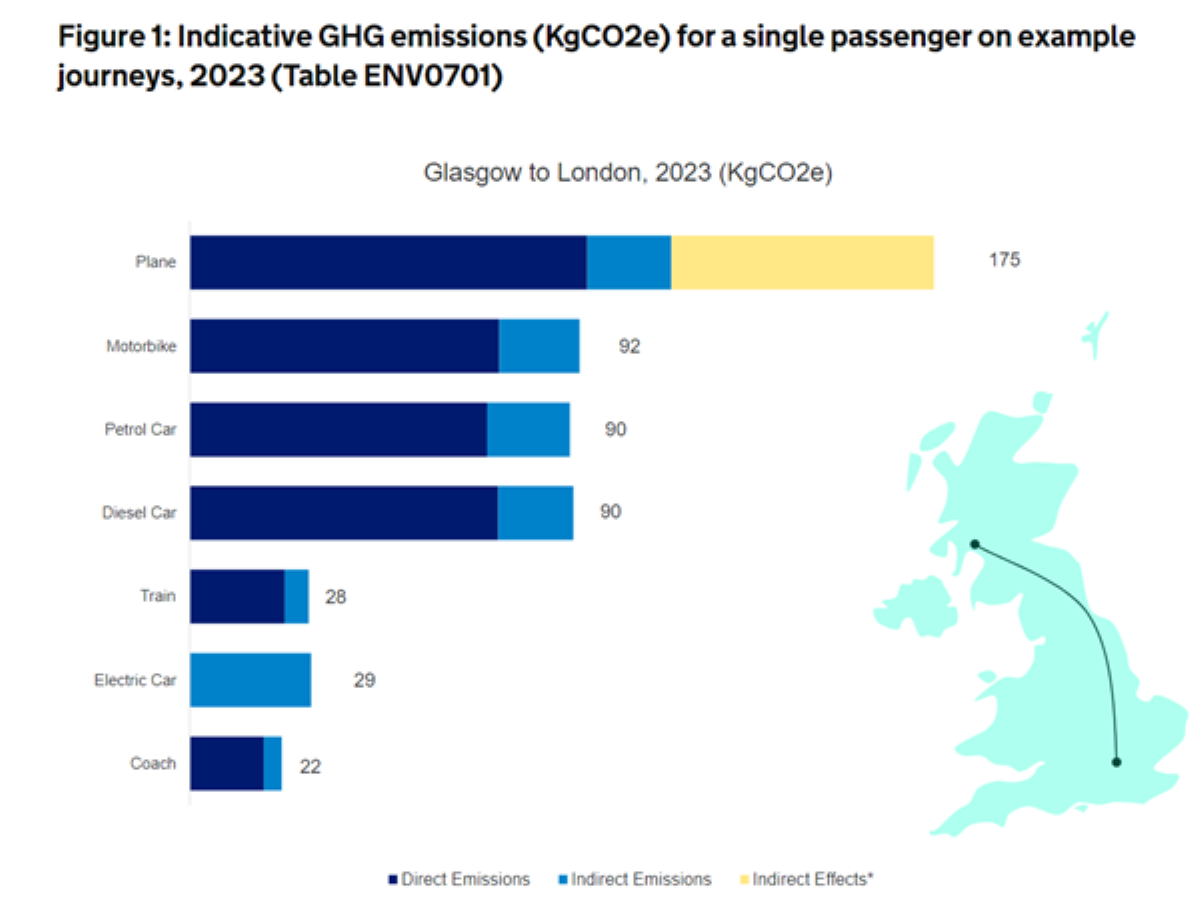New analysis from the Department for Transport (DfT) has revealed the impact of transport on the environment, comparing different fuel types and modes of transport.
It found that travelling by electric car is second only to travelling by coach for lowest direct and indirect greenhouse gas (GHG) emissions.
A passenger trip by train is marginally less polluting, but loses out to an electric vehicle (EV) because of its direct CO2 emissions, of which an EV has none.
Direct emissions are produced by the type of transport itself, indirect emissions cover CO2 from the production of the fuel it uses. In the case of EVs, that is electricity generation.
For an example journey between London and Glasgow (see below), a journey via the average petrol car emits more than four times more CO2e per passenger than the equivalent journey by coach, or three times more CO2e per passenger than an electric car (taking into account emissions from electricity generation and distribution).

The same journey by plane would emit almost twice as much CO2e per passenger than a journey by the average petrol car.
Plane journeys that transport many passengers emit very high levels of GHGs, require passengers to make additional journeys to and from the airport, and have uncertain climatic effects beyond this (for example, the reflection of sunlight on contrails), so can produce more GHG emissions than cars.
However, using the example journey of Leeds to Belfast, the DfT says that car journeys must go further to reach the ferry terminal, and so cars end up emitting much greater GHG emissions.
A journey can be more efficient in terms of emissions by being more direct, which is also a reason why DfT example train journeys show fewer estimated total emissions.
The statistics also show that, in 2021, cars made up 75% of the road vehicle miles travelled within the UK but produced 57% of transport emissions, while HGVs made up a much smaller proportion of the vehicle miles (6%) and their emissions were disproportionately greater (21%).
Jack Cousens, the AA’s head of roads policy, says that the statistics illustrate how EVs will eventually transform the greenhouse gas profile of the private car in the “near future”.
“The only impediment to further improvement is the mix of electricity generation in the UK – more wind, solar and tidal power will make car journeys even greener,” he added.
“It will also make the cost of travel cheaper.”
The DfT report found that domestic transport was responsible for emitting 109 MtCO2e (million tonnes of carbon dioxide equivalent) in the UK in 2021, a 10% increase from 2020, though emissions remain well below historic trends.
Transport is also the largest emitting sector of GHG emissions, producing 26% of the UK’s total emissions in 2021 (427 MtCO2e), while emissions from international aviation fell 10% from 2020 to 13.3 MtCO2e, following a fall in 2020 of 64%.
On average, 304 kilotonnes of CO2e were emitted by transport in each local authority, while 32% of Nitrogen Oxides (NOX) emissions and 14% of particulate matter less than 2.5 micrometres across (PM2.5) emissions came from transport.
Matas Buzelis, car expert at CarVertical, said: “It is disappointing to see that greenhouse emissions from domestic vehicles increased by 10% in 2021, but considering much of the UK was locked down for long periods of 2020, this is not wholly surprising.
“Although these emission levels are below historic norms, the UK must not go backwards. There is a risk momentum will be lost by the Government’s decision to push the ban on petrol and diesel cars back until 2035.”





















Login to comment
Comments
No comments have been made yet.